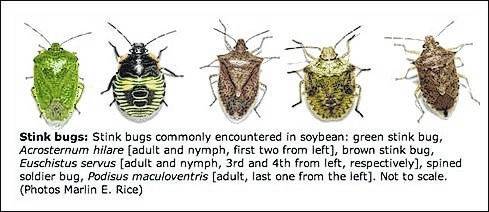
Both southern and common rust have been confirmed in multiple corn fields across the state, including Clinton County.
Currently in Ohio, common rust is more prevalent and most of the affected fields are in the southern half of the state.
Southern rust is characterized by the presence of small, circular, light orangish pustules predominantly on the upper surface of the leaves, whereas common rust produces larger, more elongated, and darker (cinnamon-brown) pustules on both leaf surfaces.
Most of the fields that were planted early are now beyond R1 (silk emergence) and late-R2 (brown silk), and as such, are less likely to be heavily impacted by rust.
According to Pierce Paul, plant pathology specialist with Ohio State University, common rust in particular tends to become less severe as the season progresses as it prefers cooler conditions.
By contrast, late-planted fields, most of which are still between V10 and V18, are at greater risk for yield reduction due to rust. Southern rust can be very damaging if the hybrid is susceptible, symptoms develop early (before tassel), and the weather stays warm and wet during pollination and grain fill.
Under favorable conditions rust can spread very quickly on a leaf, from one leaf to another, and from one plant to the next. The rate at which it spreads is heavily dependent on the amount of spores available (blowing in from the south or from a nearby affected field) and how long it takes for each set of new pustules to produce new spores.
If it stays wet and warm over the next week or so as late-planted fields approach R1, several new crops of spores will be produced, new infections will occur, and more leaves will become damaged before grain fill is complete.
Several of the commonly used foliar fungicides will provide good to excellent control of both rust diseases. However, timing is extremely important.
Pierce Paul suggests the best results are often seen when applications are made as soon as the first few pustules are observed. This helps to reduce the rate of disease development and spread by preventing new pustules from developing and reducing the number of spores available to infect healthy leaves.
Give priority to protecting the latest-planted fields as they are at the greatest risk for damage and yield loss.
As our beans start to put on pods, it’s time to start scouting for stink bugs. According to Ohio State University entomologists, in 2016 a number of farmers had significant stink bug damage but didn’t realize it until harvest, when they discovered shriveled, blasted seeds. Seed damage can be prevented by scouting and treatment at appropriate threshold levels.
There are several species of stink bugs that can be found in soybeans, even beneficials. These include the green, the brown, the red shouldered and the brown marmorated stink bug.
The spined soldier bug looks similar to the brown stink bug, but has sharper points on its shoulders, and is more brown on the underside (the brown stink bug is actually more green underneath).
Both nymphs (immatures) and adults feed on the developing seed by using their piercing/sucking mouthparts to poke through the pod. Seed that is fed upon will take a flat or shriveled appearance.
Often this damage is not seen until harvest time, because the pod usually retains its shape, despite the smaller seed. Therefore it is important to scout early and control if necessary.
Most insecticides labeled for soybean include stink bugs on the label, and most are adequately effective. Keep in mind it is easier to kill immatures than adults. OSU recommends when scouting for stink bugs, take multiple 10-sweep samples with a sweep net in multiple locations throughout the field.
Average the number of stink bugs in the 10-sweep samples. The threshold to treat is 4 or more stink bugs (adults and nymphs combined). If soybeans are being grown for seed, the threshold can be dropped to 2 or more stink bugs.
For more information to both of these topics check out the Ohio State University CORN Newsletter at the Agronomics Crop Network https://agcrops.osu.edu/newsletter.
Tony Nye is the state coordinator for the Ohio State University Extension Small Farm Program and has been an OSU Extension Educator for agriculture and natural resources for 29 years, currently serving Clinton County and the Miami Valley EERA.


